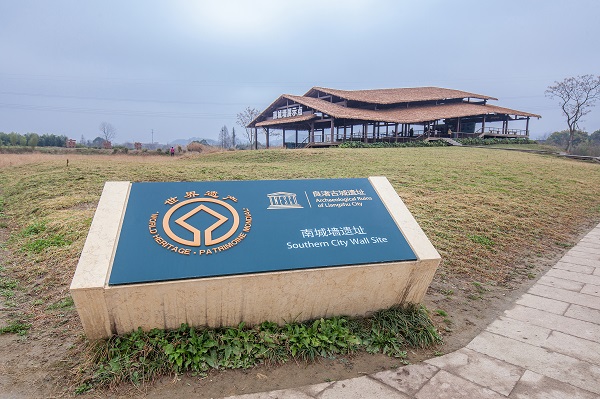Community canteens in China seek sustainable solutions through hardship and exploration
Editor's Note:
AI, digital life, space travel ... The future is coming at an unimaginable speed.
At this crucial juncture when China has embarked on a new journey to comprehensively build a modern socialist country, such rapid development and transformation not only bring vast opportunities and prospects, but also unpredictable challenges and problems.
These challenges and problems, ranging from the future of human survival, the transformation of local development, to the life and death of a family or a stray animal, could be key topics that trigger social discussion. Each debate surrounding these topics is an inevitable pain point on China's path to pursuing high-quality development.
Against this backdrop, the Global Times has launched the Deep Focus series, focusing on specific issues in current social development. Through detailed investigation and research, we aim to uncover the root causes behind these problems, seek solutions, and engage with relevant parties and sectors to find keys to unlock these complex issues.
In this installment, we delve into the problems occurring in community canteens, which are becoming vital gathering places for seniors but also facing growing pains.
It's an ordinary weekday afternoon. Liu Min, a 57-year-old retiree strolls from his home across the street to the newly opened community canteen "Jia Fan Xiang" in Beijing, just as he does every day.
With practiced ease, he picks up his utensils, buys his meal, and checks out with a 12-percent senior discount before finding a seat among the lunchtime crowd.
On his tray are braised pork in rich sauce, tender chicken with potatoes, and bright green spinach - all for just over 30 yuan ($4.5), an excellent deal by local standards.
During the three-hour lunchtime rush observed by Global Times reporters, waves of diners came and went without pause. The crowd was an even mix of senior and young residents. The small 30-square-meter dining area buzzed with laughter and conversation, and a few seniors, after finishing their meals, even took out their own containers to pack up extra portions to take home.
"Jia Fan Xiang" means "the aroma of home-cooked meals." "We want to offer affordable, homey dining for our customers," a staff member surnamed Tang explained to the Global Times.
At the end of 2024, the number of people in China aged 60 and above surpassed 300 million for the first time. In the next decade, the country is expected to see a net increase of over 10 million seniors each year, according to CCTV News.
As Chinese society continues to age, communal canteens that once sprang up across major cities are now experiencing mixed outcomes. While some have become "community stars" for their affordable prices and heartwarming service, some have quickly fallen into decline, facing dwindling foot traffic, operational difficulties, and in some cases, quiet closures, after a brief period of popularity.
For instance, in terms of Jia Fan Xiang's case, rent and wages are problems. Tang said that "the initial investment was quite large, and despite various forms of government support, we're still operating at a loss for now."
Yu Shaoxiang, chief research fellow at the National Institute of Social Development under the Chinese Academy of Social Sciences, said that such community canteens serve as an important component of "building better communities and improving quality of life," adding that community canteens are essentially market-driven entities, "not a mandatory administrative arrangement," and must find a balance between policy guidance and market logic.
New models for aging communities
In the eyes of some residents in Bajiao subdistrict of western Beijing's Shijingshan District, the community canteen has long been more than just a place to "grab a hot meal."
As the community - home to many retired workers from the former Shougang Group, one of China's largest steelmakers - faces a growing aging population, a small canteen is offering a new approach to turning "eldercare" into something more enjoyable.
Qi Huilan, head of the Bajiao community canteen, told the Global Times that since its opening in November 2024, the canteen has become a daily gathering place for senior residents from three surrounding communities.
Every day at noon, three busy staff members prepare six to seven different dishes - ranging from pork ribs and shrimp to homestyle stir-fries - served with rice in a standard "two meat, one vegetable" set meal.
"There are many seniors here. Some come regularly, while others stop by from time to time. For those with mobility issues, we even deliver meals to their homes," Qi said.
The canteen's stable operation is largely thanks to dual support from both the government and the local community. Qi explained to the Global Times that each meal receives a 3-yuan government subsidy, and eligible seniors receive an additional 5-yuan allowance. "Seniors pay just 13 yuan with their cards, and we later apply for reimbursements," she said.
With growing demand from residents, the canteen plans to introduce more interactive programs such as health lectures, holiday dinners, and community volunteer services, gradually transforming the canteen into a shared community space, the Global Times learned.
Although the Bajiao community canteen has become a "second home" for many seniors, Qi acknowledged the operational challenges behind the scenes. The biggest difficulties lie in cash flow and fluctuating customer numbers.
Qi said the canteen must cover rent, utilities, labor, and ingredient costs from daily operations. "If we can sell 150 meals a day, we can break even. But in reality, it's hard to reach that number consistently," she noted with a trace of helplessness.
Besides financial stress, staff shortages are another major challenge. The entire canteen is run by just three people: One chef, one kitchen assistant, and Qi herself - who handles accounting, procurement, management, and customer service. The kitchen is small and under-equipped, which limits daily operations.
"Sometimes it gets so hectic that lunchtime becomes a real crunch," Qi said. She hopes to attract more involvement from society, such as bringing in volunteers or establishing cooperative mechanisms with companies, to make the meal services more professional and sustainable.
With a smile, she added, "We're not doing this to make big money - we just want our senior citizens to have a hot meal close to home."
Serving, yet struggling
On one end lies the vision of caring for seniors, on the other, the harsh reality of financial struggle and looming closures.
Certain community canteens in cities such as Beijing, Xi'an in Northwest China's Shaanxi Province, Shenyang in Northeast China's Liaoning Province, and Hangzhou in East China's Zhejiang Province have been shutting down. Some closed within just two months of opening, leaving hundreds of seniors unable to get refunds for their prepaid cards. The widening gap between meal prices and operating costs has become one of the main challenges to keeping these canteens running, according to China Comment, a platform affiliated with the Xinhua News Agency in March 2024.
A study by a professor at Wuhan University found that in East China's Jiangsu Province, while Suzhou's senior meal service system was theoretically capable of serving 120,000 people a day, it actually served only 24,000, the People's Daily reported in September.
High operating costs, reduced subsidies, and issues such as unclear service positioning of operations have all hindered the effectiveness and sustainability of community canteens, the report said.
In a residential community in Dalian's Shahekou district, 55-year-old Zhao Yi, who once ran a community canteen, witnessed firsthand the highs and lows of this public-welfare business between 2016 and 2021.
When he first entered the field, Zhao believed he had found the perfect opportunity. But once ideals met reality, the challenges quickly surfaced.
"The first problem was menu innovation," Zhao told the Global Times. "The customer base is fixed, but they expect new dishes all the time."
"Then there's food safety," he added. "In summer, food spoils easily, and even a small incident can make residents lose trust."
Today, the struggle of community canteens remains a hot topic on Chinese social media. On platforms like Douyin and Xiaohongshu (also known as RedNote), some users lament the closure of their favorite neighborhood canteens, while others complain about unscrupulous operators who take government subsidies but run their businesses perfunctorily.
Key livelihood project
While some community canteens have struggled to survive, others across China are exploring more sustainable paths. Both central and local governments are advancing senior meal assistance services as a key livelihood project in the transition to an aging society.
From the joint release of the action plan to promote the development of meal services for seniors by 11 departments including the Ministry of Civil Affairs, to the allocation of 300 million yuan in central government funding to support the establishment of a meal assistance system, and the pledge to "increase support for senior meal services" in the 2025 Government Work Report, various levels of government are steadily building a service network that is accessible across both urban and rural areas, reasonably distributed, and based on shared participation and benefits.
To ensure community canteens remain sustainable, it is crucial to address the challenge of long-term operations. Yu said that community canteens "cannot be fully marketized, nor can they rely entirely on subsidies." Instead, they should follow a path "led by the government and operated with minimal or no profit motives."
In Yu's view, only by combining policy guidance with broad social participation can community canteens move beyond the fate of being "a flash in the pan" and evolve into a stable and heartwarming way of life.
Yu further noted that community canteens are just one aspect of building senior-friendly cities. In the future, a more diverse public service system could be developed to meet seniors' multifaceted needs. "For example, our community has a self-service book kiosk where seniors can borrow and return books by card, anytime, without being restricted by library hours. This type of smart, convenient service actually aligns with the same principle as the community canteen - integrating public resources into residents' daily lives."
From random interviews, the Global Times felt that regular patrons like Liu Min remain optimistic about the future of community canteens.
"This kind of service has become a part of people's livelihoods," he said. "I worked in the food service industry before retiring. From experience, I can tell that as long as they maintain the current quality and price of meals, this place will definitely win people's hearts."
-
3rd Liangzhu Forum to be held in Hangzhou from Oct 18-20
October 11, 2025
-
Hangzhou sees tourism boom during National Day, Mid-Autumn holidays
October 9, 2025
-
Hangzhou rolls out cultural, tourism perks
September 29, 2025
-
Visionary Pathway - Hangzhou Playbook
July 15, 2025



